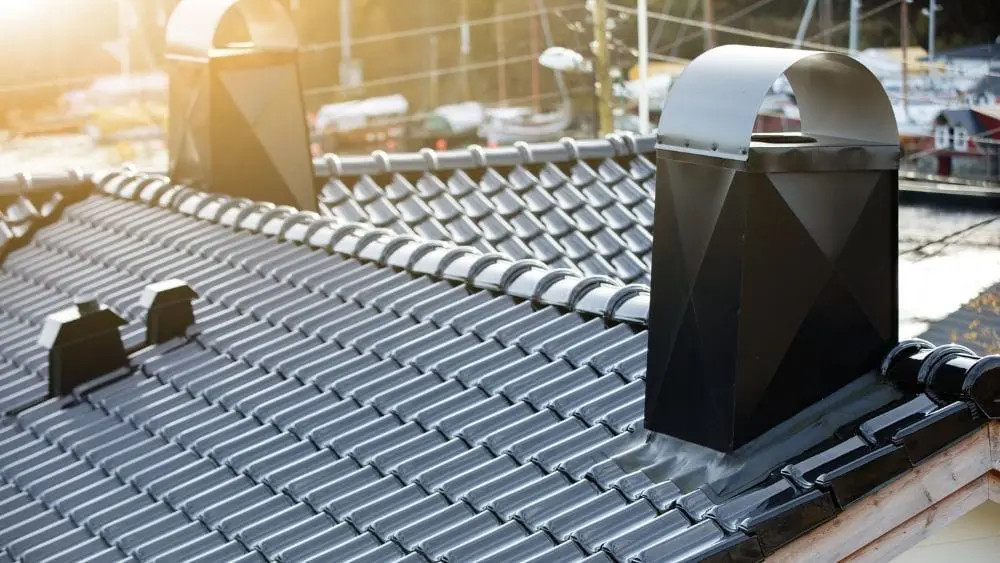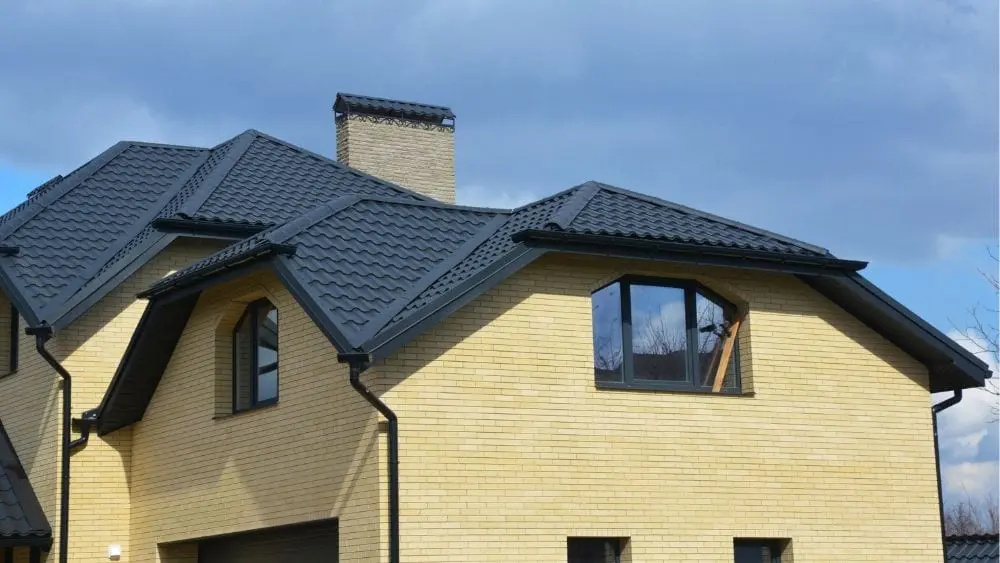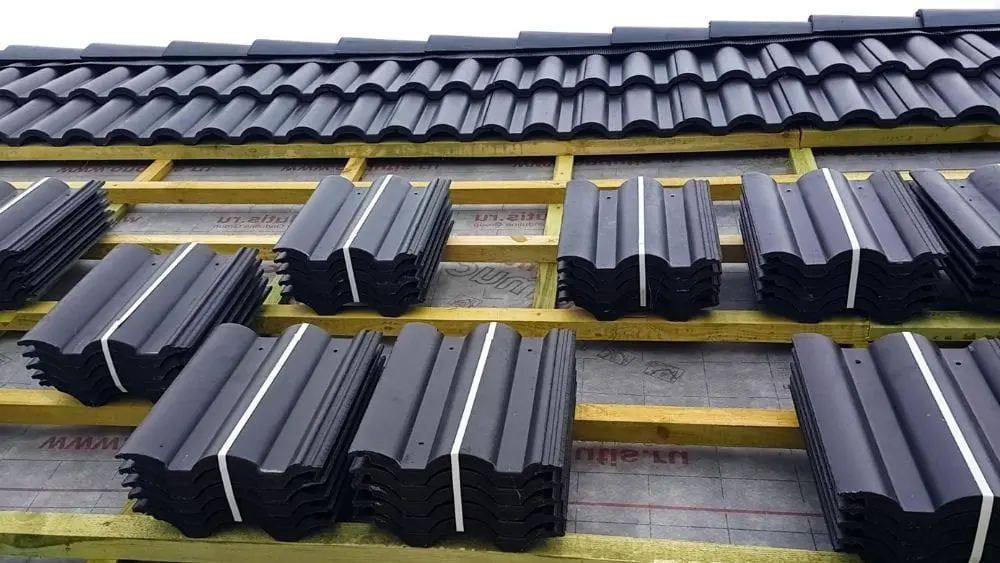
Ceramic tile shingles offer a touch of elegance and style to any roof. They are perfectly suited for homeowners who desire a distinctive exterior design with a resilient nature. Made for durability and outstanding performance, ceramic roof tiles have proven strong against water, wind, and extreme heat so you can rest easy knowing that your dream home is built to last.
Sometimes, ceramic tiles may be synonymous with clay tiles. This is because ceramic tile shingles originate as clay tiles; milled clay is mixed with additives such as water and sand and then shaped into custom molds of various shapes and sizes. Once removed from the molds, the shingles are carefully dried and later fired in a high-temperature kiln to ensure durability and fire resistance. This creates the well-known terracotta clay tile of natural earthy-brown and red hues.
Unglazed terracotta clay tiles offer distinctive natural tones but remain very porous and are susceptible to mold or water stains over time. This is why natural clay tiles must be either treated with a sealant or glazed for protection from the elements. Glazing is a process that involves the bonding of a glass-like surface finish to the clay tile through a second kiln-firing process. Dyes may be blended with the glaze before the second firing, resulting in a waterproof and stainproof ceramic tile in the color of your choice.
In this article, I will share some advantages and disadvantages of glazed ceramic tile roofing. This unique and powerful roof material will not only impress your neighbors with a gorgeous street presence but will add value and style to your home for many years to come.
Home Style and Design

Existing in Spain for hundreds of years, these mosaic tiles create a stunning pattern that is sure to dazzle your neighborhood and stand out from the subtlety of dark asphalt shingles. Ceramic tile roofs can be applied to a contemporary home design or a traditional Southwestern or Spanish-style home. They also look beautiful when incorporated in Mediterranean-style finished homes.
With their careful placement, ceramic tiles are arranged to create downward water channels and are well-suited for roofs with sharper slopes. For roofs with a pitch less than 4:12, ceramic roofing is not recommended.
Advantages

There are many benefits associated with ceramic roofing material.
Gorgeous Aesthetics
With a seemingly endless array of color availability, ceramic tiles can be conformed to the shape and palette of your choosing. They can create a statement with a bright yellow pop of color or provide a calming blue or forest-green backdrop. Some homeowners pair richly-colored ceramic tile roofs with copper or metal accents to make an old-world impression.
The ceramic tiles could be the traditional curved shape of Spanish villa-style roofs or lay flat to resemble a slate roof. This roofing material allows you to choose your color, shape, and size. Further, ceramic tiles offer the flexibility to design your roof to fit your personal home aesthetic.
Superior Strength and Longevity
Due to the kiln-firing process and exposure to extreme temperatures, ceramic tiles are fire resistant and offer outstanding durability against the elements. Typically, you can expect your ceramic roof to last a minimum of 50 years with regular recommended upkeep. Some have been known to last 100 years or longer.
Premier Energy Efficiency
The shape of ceramic tile and the material composition allow the free flow of air underneath the shingles. This built-in insulation means that your roof will be able to retain warmer air during the winter and cool down your space in the summer. Over the long-term, a ceramic roof has the potential to save you a bundle in energy costs.
Eco-Friendly Option
Many ceramic tile varieties are made from natural, recyclable materials and contain no chemical preservatives. Ceramic roof tiles do not attract dust or dust mites, thus aiding in clean air circulation throughout your home and may even reduce household allergens. If you or a member of your household suffers from allergies, you might consider the benefits of ceramic roofing.
Disadvantages

Ceramic roofs offer incredible benefits, but there are some drawbacks to consider before taking the leap.
Tricky Installation
As mentioned, ceramic tiles must be very carefully placed in a scaled arrangement to facilitate proper runoff and irrigation. This is not a DIY project for the at-home construction squad. You will need a skilled professional with experience in installing ceramic shingles to complete your roofing project. It will involve choosing the appropriate underlayment, correctly measuring the roof in order to buy adequate supplies, and understanding the precise layout to prevent damage or future leaks.
Potential Breakage
Ceramic tiles are built to withstand the elements, as long as they are properly attached to your roof. However, the transport and installation of the tiles requires the utmost care and caution to protect each individual ceramic piece. While the tiles are likely to hold up against golf-ball sized hail, they are not as likely to resist breakage when stepped on by an adult human. Damage to these fragile tiles will add to replacement costs.
Heavy Weight
When compared to the traditional asphalt shingle roof, ceramic tiles are quite hefty. They are built strong, but weigh more than your standard materials. This may require that additional support be installed below the underlayment to bear the heavy weight, which also adds to the overall cost.
Required Maintenance
There is a required amount of upkeep for ceramic tile, so be sure to consult your roof contractor for recommended maintenance schedules. Specifically, the underlying material may need to be inspected and potentially replaced every eight to 20 years by a skilled professional. Failure to complete recommended maintenance may lead to extensive damage repair costs later.
Suitable Climate

Since ceramic tile has the capacity of remaining unaffected by extreme weather conditions, it may be suitable for a wide range of climates. The earthen clay material is resistant to corrosion by salty air, making it an optimal choice for coastal areas. These materials are often found in warm Southern regions but have been fortified over time to withstand gradually colder climates.
However, it is worth noting that unglazed clay tiles may not be well-suited for particularly wet climates. Without the protective layer of bonded glass materials, the clay may be more susceptible to water absorption, potentially leading to mold or moss issues. It’s best to protect your tiles with a strong sealant and continue regular maintenance checks.
Cost

Ceramic tile roofing is an expensive option at onset for materials and installation. On average, you can expect the cost to range between $1,000 and $1,800 per square for 100 square feet of roof area installed. Some less common ceramic tiles may cost as much as $3,000 per square, installed. This figure will rely heavily on the slope, pitch, and size of your roof, local contractor pricing, and the individual tile specifications.
Mosaic-Style Beauty on Your Modern-Day Roof

Whether you are building a new home that celebrates the stylings of a gorgeous Spanish villa or recreates Mediterranean seaside charm, a ceramic tile roof will add beautiful texture and lasting color to your masterpiece. These dreamy patterns and lovely designs are not just incredible to look at, but also built to withstand extreme weather conditions and high-impact winds. With the right care over time, your ceramic roof will continue to protect your home and family for generations.

Melanie Theriault is a writer, counselor, and lifelong learner. She holds a B.A. in Sociology from Southwestern University, where she discovered her passion for fostering human connection through storytelling.
 Mansard Roofs Offer a Touch of French Elegance
Mansard Roofs Offer a Touch of French Elegance